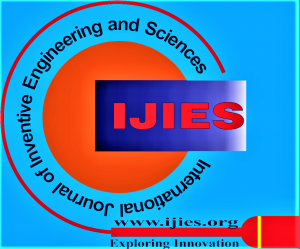![]()
Achieving Maintenance Excellence in Manufacturing Through Integration of Lean Six Sigma and Proactive Approaches: A Case Study
Attia Hussien Gomaa
Prof. Dr. Attia Hussien Gomaa, Department of Mechanical Engineering, Faculty of Engineering, Shubra, Benha University, Cairo, Egypt.
Manuscript received on 24 January 2025 | First Revised Manuscript received on 30 January 2025 | Second Revised Manuscript received on 16 February 2025 | Manuscript Accepted on 15 March 2025 | Manuscript published on 30 March 2025 | PP: 1-14 | Volume-12 Issue-3, March 2025 | Retrieval Number: 100.1/ijies.B109912020225 | DOI: 10.35940/ijies.B1099.12030325
Open Access | Editorial and Publishing Policies | Cite | Zenodo | OJS | Indexing and Abstracting
© The Authors. Blue Eyes Intelligence Engineering and Sciences Publication (BEIESP). This is an open access article under the CC-BY-NC-ND license (http://creativecommons.org/licenses/by-nc-nd/4.0/)
Abstract: Achieving maintenance excellence is essential for enhancing operational efficiency, reducing unplanned downtime, and maintaining the performance of critical manufacturing systems. This study examines the integration of Lean Six Sigma (LSS) with proactive maintenance strategies—Risk-Based Inspection (RBI), Reliability-Centered Maintenance (RCM), and Total Productive Maintenance (TPM)—to improve equipment reliability, extend asset lifespan, and optimize resource utilization. While LSS targets inefficiencies through continuous improvement, RBI, RCM, and TPM offer data-driven, proactive solutions for minimizing downtime and enhancing system performance. Despite their successes, the combined application of these methodologies in asset management remains largely unexplored. This paper introduces a novel framework that integrates LSS, RBI, RCM, and TPM to optimize asset performance by improving reliability, availability, maintainability, and safety (RAMS), while reducing risks and costs. The framework includes well-defined objectives and key performance indicators (KPIs) to facilitate data-driven decisionmaking and encourage ongoing improvements. Validated through a case study of a major shutdown maintenance project at a feedwater pumping station in a petrochemical company in Egypt, the framework demonstrated significant outcomes, including a 60% reduction in non-value-added time, a 43% decrease in downtime, and a 22% improvement in shutdown efficiency (from 27% to 49%). These results underscore the synergistic potential of integrating LSS, RBI, RCM, and TPM to optimize maintenance practices and enhance operational performance. This study provides valuable insights for both academics and industry professionals seeking to align maintenance strategies with organizational objectives and drive sustainable, long-term improvements.
Keywords: Maintenance Excellence, Proactive Maintenance, Lean Six Sigma, Risk-Based Inspection, Reliability-Centered Maintenance, Total Productive Maintenance
Scope of the Article: Recent Engineering & Technology
